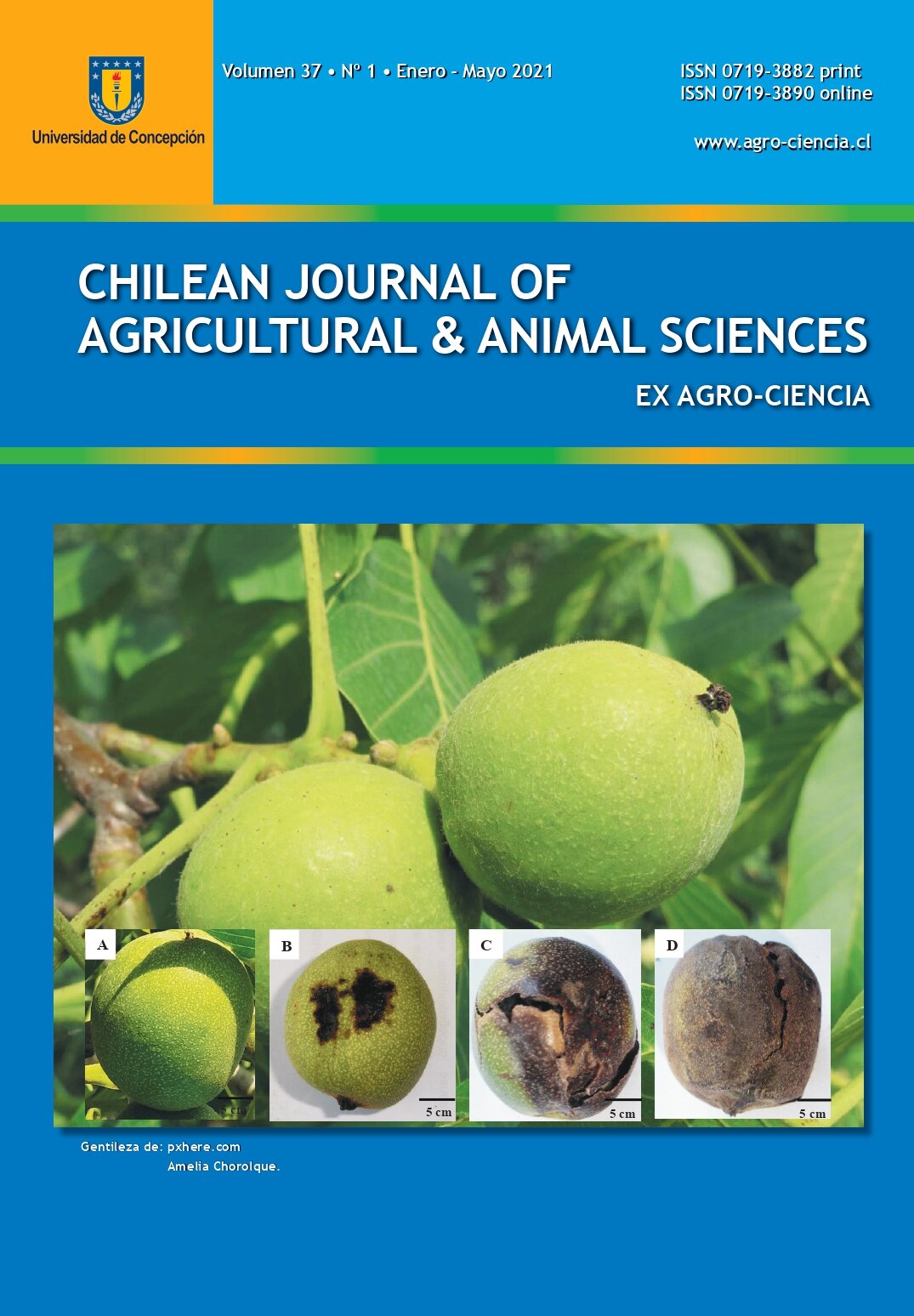ABUNDANCIA Y DEPREDACIÓN DE Ceraeochrysa valida (NEUROPTERA: CHRYSOPIDAE) SOBRE Diaphorina citri (HEMIPTERA: LIVIIDAE) EN COLIMA, MÉXICO
Martín Palomares-Pérez1, Miguel Angel Ayala-Zermeño1, Beatriz Rodríguez-Vélez1*, José de Jesús de la Cruz-Llanas1, Jorge Antonio Sánchez-González1, Hugo César Arredondo-Bernal1 y Esther Gisela Córdoba-Urtiz1
ABSTRACT
Diaphorina citri Kuwayama is considered the most important pest of citrus since it transmits the bacterium Candidatus Liberibacter spp., causing the death of millions of citrus trees all over the world. This research studied the ability of Ceraeochrysa valida (Banks) as a biological control agent against D. citri. The study was conducted under field and laboratory conditions, considering four different criteria: 1) distribution and presence of C. valida in lemon orchards in the state of Colima, 2) maximum predation of C. valida on D. citri nymphs under laboratory conditions, 3) life tables of D. citri with release of C. valida under field conditions, and 4) predation of C. valida on D. citri in the field. The results showed that Ceraeochrysa valida was present in the orchards evaluated throughout the year. The average amount of D. citri nymphs consumed by C. valida under laboratory condition was 258.26 ± 3.80. The release of 20 larvae of C. valida in the field produced an average mortality of 160.29 ± 26.32 nymphs of D. citri against 27.33 ± 3.39 without release (F = 11.98, Pr > F = 0.0134). The analysis of life tables for the months of December, January, February and March showed that egg and nymph mortality was higher in treatments in which C. valida was released (0.9768; 0.8482; 1; 0.9922) compared to those in which no release occurred (0.8481; 0.4467; 1; 0.8032). Ro reached values lower than one under release treatments (0.1628; 0.5893; 0.000; 0.4870), while these were close to or higher than one (0.7278; 1.1733; 0.1231; 1.0787) in the treatments without release. It can be concluded that C. valid can be considered as a biological control agent against D. citri.
Key words: biological control, Asian citrus psyllid, life tables, Huanglongbing (HLB), predator.
1 Centro Nacional de Referencia de Control Biológico, SENASICA-DGSV Km 1.5 Carretera Tecomán-Estación FFCC, Colonia Tepeyac, Colima, México. C.P. 28110.
[email protected], [email protected], *[email protected], [email protected], [email protected], [email protected], [email protected]
* Autor para correspondencia E-mail: [email protected]


